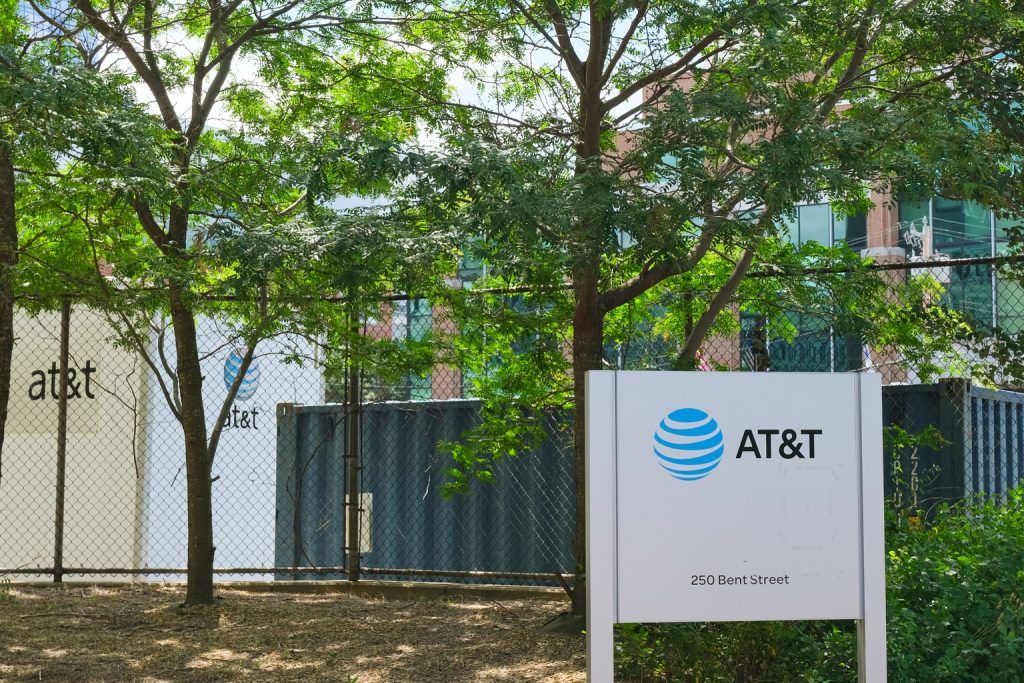Listen here or on the go via Apple Podcasts and Spotify
Fundstrat economic strategist Hardika Singh shares why she’s shocked by how strong this market has been despite so many curveballs thrown at it (0:30). News priced in this relentless bull market (8:00). ETFs and stock picking (13:15). Buying the dip will power us to new highs (19:20). Puzzling economic data (21:30). Gold’s surprising rally (27:00)
Transcript
Rena Sherbill: Very happy to welcome to Seeking Alpha, to Investing Experts, Hardika Singh, economic strategist at Fundstrat. Welcome to the show, Hardika. Really great to have you on.
Hardika Singh: I’m so excited to be here.
RS: It’s great to have you. So talk to us about how you’re thinking, briefly speaking, give us a general overview of how you’re looking at these markets. Smack dab in the October. How how are you thinking about things generally speaking these days?
HS: I am just completely shocked by how strong this market has been even though there’s been so many curveballs thrown at it.
You have the shutdown right now, and it’s looking out, it’s not short by any means. It’s been many, many days now.
We have tariffs. We have a rise in geopolitical tensions and trade wars. And despite it all, this AI driven bull market, it’s been all gas, no breaks. So I’m just completely surprised in a happy way about how strong this market has been.
RS: What would you say is the number one place that you’re looking or you would encourage retail investors to be looking at this market in terms of capturing the most alpha? Is there a place that you’re looking at that you would categorize as such?
HS: The most alpha, I think, can be, this is going to sound like a cop out answer, but it’s really tech. Tech and utilities.
This AI driven bull run that we’re seeing right now is not only benefiting tech stocks because of the other chipmakers, but we also have a huge surge in demand for power generation and these data centers that are being built out.
And I think utilities has been a big beneficiary in that. I have to double check, but I think that utility sector in the S&P 500 (SP500) is one of the top performers this year.
So I think that’s just another sign that you can look outside of tech, but it still remains in this AI circle and will benefit big from that boom.
RS: What would you say about the data centers and utilities? How would you encourage investors to think about the bigger players, the up and coming players? How do you think about that theme?
HS: I think that the biggest sign of that can be seen right now in what’s happening with Russell 2000.
Since the market low in April due to Liberation Day, Russell 2000 has been on a steady climb higher. And it wasn’t until the past month that people really started to pay attention to it.
They’re a very unloved group of the market. You’re all large caps all the time, but then you have small caps.
No one cares about them as much. But if you look inside this recent rally posted by small caps, you will see that a lot of these players that are winning are actually tied to technologies, industrials, and utilities. So you have to look deeper in there.
And if I could just name a few stocks, you have Credo Technology (CRDO) shares. They’ve almost doubled this year. They make electric cables, and obviously, electric cables right now are benefiting from this current data center build out.
You have Bloom Energy (BE). Their shares have almost quintupled this year. They have fuel cells that can turn natural gas or hydrogen into electricity, which is in high demand right now.
Again, we need power to have these data centers. And then you have Oklo (OKLO), which is like a nuclear play, shares of which have more than sextupled, also lifted higher by the same AI enthusiasm. And full disclosure, after double, triple, quadruple, I kinda had to look out what comes next.
I think that this same wave of AI enthusiasm is also carrying smaller players and more it’s not just the legacy players anymore. You have smaller ones too participating.
RS: That’s funny. That maybe the best way to synthesize what’s happening in the tech space, which really, as we talk about a lot on this podcast, is ever reaching every day ever further. But to say, what’s the word for five times that? That’s where we’re at.
As we’re talking, I realized for people that don’t know, would you give a little bit of your background about how you got into investing and what has changed for you since the beginning until now and what maybe you’ve been rethinking.
Like, you talked at the beginning about being surprised by the length of this run. Maybe what that has catalyzed for you in terms of strategy or what has further entrenched your strategy perhaps?
HS: So I work as an economic strategist at FundStrat, and that’s just really a fancy title for somebody who reads and writes and talks all day every day. And it’s a really fun job because who doesn’t wanna read and write every day. `I look at markets. I figure out what’s the best way to look at the signals that are going on and synthesize them in a way that makes sense, makes it entertaining for people to read.
I think that, with this year’s market, I personally was in the bearish camp when tariffs were being thrown around earlier this spring. And I was on vacation in in Mexico, and I had just landed. And I was headed to the hotel, and I remember seeing all the news because I wasn’t keeping in touch with my phone during the four hour flight.
And then I saw all the news, and I was just like, oh, no. The stock market is not gonna handle this very well. And sure enough, the next few days, they were very, very volatile.
And I think that I was in one of those bearish camps because I was just like, I just don’t see how consumers and corporations are going to take this in stride and say that, you know what? This is not a big deal. We’re gonna be just fine.
But over the next few few months and few weeks, I was surprised at how the stock market kept recovering, and I think part of that was due to how fast the stock market fell. The news was just announced. We didn’t even know if the tariffs were going to go into effect and actually cause a decline in economic activity. We didn’t know all these things.
But still, the stock market fell so much. And I think the reason why we have continued to recover from it is because so far it’s mostly corporations and businesses that are paying these tariffs.
A big impact hasn’t been seen on consumers, at least from the economic data that was released before the shutdown. I think I saw this stat that about 51% of the tariffs are being paid by US businesses right now versus 37% by consumers.
I think that the president pretty early on was really, really, clear that he didn’t want corporations to be charging consumers these taxes on the people air quotes.
And I think that’s what’s helped keep the stock market afloat. And at the same time, we have this huge AI bull run that shows no signs of slowing down. And I think that has really helped change the sentiment.
And for me, at least, I think that instead of focusing on this glass half empty view, I’m focusing on this glass half full view, and I think that’s what other investors are looking at as well. That was the biggest change for me.
RS: And it seems also that things that are priced in, which explains the sustained bull market, and it seems like that’s a big factor in this run. Would you agree with that?
HS: Yes. I think so. And I think that’s why when even just a little bit of bad news comes in, stocks get hit, and then the next day, we recover.
I think that people are just sitting on the edge of their seats right now. Investors are sitting on the edge of their seats right now. And I think they’re just looking for any argument to not believe in this bull market.
And that’s something I’ve been writing about to our clients all year long that you can keep looking for a thousand reasons, but the fact of the matter is that this is a bull run that’s relentless. And if you don’t participate, you’re going to get left behind.
RS: And what would you say about those those somewhat grizzled veterans or the not somewhat grizzled veterans, but those who have come from a more historical perspective and have looked at previous bubbles being popped and just prefer to be uber conservative?
Would you say the flip side to that is you just have to pick your place so you don’t get punished when the bubble does prick, or do you think the bubble looks different this time or the pricking of the bubble looks different this time?
HS: Just the other day in our one of our notes, we ran this quote from Sir John Templeton that this time is different are some of the most dangerous words in the stock market.
And I think, that’s a very valid argument. There are valid concerns that this might be a bubble. These AR circular investments specifically are signaling that this might be a bubble.
And I think that when you as an investor have lived through the dot com bubble, the financial crisis, it changes the way you think about investing. It changes your psychology.
And we have had a huge influx of investors since COVID 19 that are of this younger generation who haven’t really been through these terrible periods in economic history.
And they don’t they don’t have that perspective. So they’re helping push this market to new highs, whereas we have these other veterans who are very, very bearish.
Almost every every day, I see headlines from a top investor, a billionaire investor saying, no. This is not a good market. Sell, sell, buy gold. But I think these are all just concerns that are keeping you from long term investing.
If you’re a long term investor, you have to stay focused, and you can’t time the market. You don’t know if it’s a bubble. You don’t know if it’s gonna pop or if it’s gonna pop next year. So I think you have to focus on the good side of things here.
So the bullish argument here is that you keep seeing these circular flowchart variations all over the internet these days, of how OpenAI is investing money into (AMD), and then Oracle’s (ORCL) investing money into AMD, and then NVIDIA (NVDA) itself is putting money into OpenAI, and they’re all putting money into CoreWeave (CRWV) and this circular bubble chart.
And I think that is the biggest contrarian indicator itself. If people on Wall Street are making flowcharts that look like really cute graphics, it’s fine. We’re gonna be okay, you guys. I don’t think the enthusiasm has run ahead of itself.
Besides, I think that these large circular investments are necessary when we have a technological breakthrough the likes of AI happen so that scale can be achieved faster.
And that’s why I think that we can’t really compare this to previous build outs in history, like the railways or the fiber optic grids because it’s just so different in that respect.
We are still finding out in which AI will be beneficial and all the ways we can monetize it.
I think that’s why I’m not too bearish about this bubble yet because we’re still seeing a really high demand for this compute power. And if we didn’t have this demand for compute power from these companies, I’d be like, okay. Hold on. We’ve bid up the shares of these data centers and utility players so much because of AI, and they’re not even seeing demand for it.
So in this case, it’s better for these companies to be investing in others because they’re noting demand for it. I think it was Greg Brockman who said the OpenAI president and cofounder, he said that I’m far more worried about us failing because of too little compute than too much.
I think that the greater risk right now is that you don’t build out enough. I think we need to keep building this out and see where it goes. And, hopefully, it’s not a bubble. There’s no good way of knowing. But, I think that’s what I’d tell to the veterans.
RS: Another change that we have seen in the intervening years from the last big bubble, let’s say, or in just recent years in general, and I think that has inspired and attractive attracted a lot of younger investors, newer investors, has been the influx of ETFs into investing.
With these market highs, with this AI bull, it gets more and more specified and more and more nuanced, but the ETF market still stays broad as well as it was originally marketed to investors as a broader way to be invested.
What would you say in terms of investing, specifically retail investors, and what you’re seeing out of the ETF space and how you think about in terms of – is this a stock picking environment? Is this a good place to get into ETFs? How are you thinking about that comparison with ETFs and stocks?
HS: Just by top level numbers, the mood right now for ETFs is good.
September saw about 115 ETF launches, which is the highest yet for a single month in 2025, and that’s up 55% from August. That’s really good because you have to remember that ETFs are a very long game.
As an ETF manager, you’re not gonna go through all the hard work of getting the paperwork ready and filed and all the marketing pieces done if you don’t feel confident enough that the market is in a good place right now.
And I think that if ETF managers are putting out all these ETFs at this moment, then that means that they’re bullish on the market.
They think that there’s demand for it. And as of now, I think the Round Hill meme ETF (MEME), that might have made a comeback. The Round Hill meme ETF, it was really like the poster child for the COVID era meme stock boom. And just recently, it announced that it’s coming back with a new set of meme stocks in it.
And I think that with investors, retail specifically, ETFs are a good way to get diversified, especially if you’re worried about a bubble, ETFs might be a good way to see that okay. If I’m buying the S&P 500, I’m getting so much of NVIDIA. I’m getting so much of all these other big magnificent players in it.
I don’t really wanna own all that. I wanna own energy stocks instead because of how well they’re doing or something. Just throwing this out there.
If they wanna do that, then you can buy a sector specific or something from Invesco or iShares that can help you get that diversification that you can get in a regular index fund at this moment because it continues to be so overpowered by these tech players.
I think in cases like that, it’s better. And there’s also so many stocks that don’t ever make it into the S&P 500, or even in some of the other players.
And I think in cases like that, it definitely makes sense for you to get your diversification from ETFs. For example, you have uranium. That’s a huge topic right now.
And there are a few ETFs that help you track it and help you invest in it, in stocks trading in it even if you can’t directly buy futures in the uranium market because that’d be difficult for the investor to do.
I am definitely a contrarian investor. I look at markets from a contrarian view. So earlier this year, when everybody was saying that Google’s (GOOG) (GOOGL) dead, no one’s using it anymore, it’s the era of looking up things on ChatGPTnow.
We had some interns in our office, and they kept calling it. I’ll ask Chad, and I I’m thought I misheard. I was like, did you say Chad? Who’s Chad? And they said, no. That’s Chat. That’s apparently, they have a cute nickname for it and whatnot. So, you know, you can tell the younger generation’s really excited about ChatGPT and whatnot.
But I was curious. So I basically started to look up the same thing on Google and also ChatGPT to try to figure out, is there any benefit to going on this instead of a search engine to going to ChatGPT?
And, honestly, I couldn’t find all that many differences so far. Maybe the things that we’re looking up were too simple, but a lot of the important context clues were missing, in ChatGPT searches.
So I was of the opinion that Google’s gonna keep making it. Google’s not gonna disappear and fade away because of this worry that ChatGPT’s gonna take over search engines.
And for me, that ended up being an important thing because just a few months after that, we saw Google indeed recover, albeit it was not because of its place in the search engine wars, but more so because of antitrust regulations seem to not be affecting it at this moment.
So I think that, for me, that ended up being more of a contrarian trade because so many people were so negative about Google, but I was able to look through the noise and say that, well, I can’t really imagine a world without Google. I’m not sure you can either, but I think you’re just being influenced by group think at this moment.
RS: So what are the things that you’re looking at? I hear from that answer that a lot of it is, or not a lot of it, but in this case, it was narrative driven and a bit of intuitive sense. What else are the things that you’re thinking about or implementing when you’re looking at the market?
Also, I’m curious how much do you pay attention – is it equal measure, let’s say, earning season and economic data? And how many things are you putting into the mix as you’re as you’re thinking about things and assessing them?
HS: I try to do just about all of them as somebody who tries to have a macro view, 30,000 feet view, I say. I try to look at almost all of them, but I think, one of the most important things right now is buying the dip and how it keeps paying off this year and how it’s spoiling this whole new generation of investors right now.
I think there used to be a time where you would wait a much longer duration, and you wouldn’t get as much reward for buying the dip.
But I think that’s completely changed right now, and I think that’s gonna help keep powering this market to new highs.
Just as a stat, after each one day drop of 2% or more, the S&P 500 has gained over the following week more than 85% of the time.
It posted an average rally of 2. 6% over that duration. But then if you go back to 1950, the S&P 500 usually advances over the following week about 58% of the time with an average gain of 0.6%. So this new generation is waiting less and reaping more rewards from buying the debt compared to the older ones.
And I think that any meaningful declines that we see will be shallow because, you know, more investors will be enticed to jump in. I think, especially this week, that’s what we’ve been seeing. Friday, markets fell. Then Monday, we saw some investors come in, Tuesday to Wednesday as well.
Thursday, there were separate issues regarding regional banks. But I think overall, buy the dip has just completely changed the way markets operate from here on out.
RS: And what would you say about the economic data coming out that many people are categorizing it as being, a bit depressed if you’re looking at the economic data. Others are pointing to optimistic notes.
What would you say about the data that you’re seeing coming out? What would you say about the labor market and the number of rate cuts that probably are coming down the pike from the Fed. What would you say about that in context for investors?
HS: It’s been so difficult with the economic data recently because you’re right.
You can have this really optimistic view if you really focus on one data point within this release, or you can have this really pessimistic view depending on what you’re looking at.
And, truly, it’s just been very puzzling to me.
If you just look at the job market, it’s not looking good for young people at all. Young people can’t find jobs. You hear from people who’ve just graduated college. It’s nearly impossible. And it’s not just that it’s hard, it’s also hard for people who studied really difficult things in school. You have computer science. Those people can’t find jobs.
And then on the other hand, there’s this flip in the narrative that parents are encouraging their children to study liberal arts because they need people who can have original thoughts, have critical thinking skills.
It’s just completely lopsided at this moment. And I think that with the shutdown, the fact that we didn’t get a nonfarm payrolls report, I didn’t like that, personally.
We didn’t get CPI this week either. We may get it next week, but the Fed might have said that, yes, we’re likely going to get great cuts at the October.
But I think it’s still better for investors to have those datasets so we can look through it and say, okay.
Maybe the economy is in a more precarious position than we have thought. Maybe we need a greater rate cut or say that, no, 25 basis points is right because economic data doesn’t look too concerning.
But for me, I think the lack of that has also contributed to investors being on the edge of their seats so much right now because we don’t have that confidence.
And we’d really need that confidence because we love to know what’s going on with ADP. We love to know what’s going on with other datasets, but we don’t really have that because of the shutdown.
And something that I was surprised to learn was also that so many of these private data reports are also benchmarked to the BLS datasets or they get their data from the BLS.
So I was surprised that even they couldn’t put out their reports during this time. So it’s like, my gosh. What do I have? Some weird report from some random place I’ve never heard of before?
This isn’t really giving me confidence that the economy is in a good place right now. But until we see evidence to the otherwise, I think that, yeah, the Fed can confidently cut rates 25 basis points.
We need it. And I think that that’s gonna help keep powering the market to new highs.
RS: Do you have any takes about data being released if the shutdown is prolonged, or have you heard any good takes?
HS: I think, honestly, I haven’t heard any good takes, and I think that’s the most surprising thing for me because I don’t think investors are caring at this moment that we don’t have these really important reports that previously our whole monthly schedule was tied around to.
I would wake up early to watch the jobs report or CPI. And I think the fact that nobody cares about that at this moment is a little concerning.
RS: The lack of concern is concerning.
HS: Yes. It’s the complacency. It’s Yeah. We’re good. And, in the office itself, we’ve been having lots of conversation about what it’s been like to go through an airport at this moment.
I went to personally the Social Security office last week, and everything’s been fine. I haven’t had any delays. I didn’t wait in line too long.
I didn’t have to go through a random inspection or anything. None of that has happened. So, personally, in real life, we haven’t been able to see the impact of shutdown, and I think investors have been surprised by that.
And that’s why I think it’s not a really big concern for them that we don’t have these really, really important reports at this moment.
RS: What from an economic perspective, do you have any sense of how long this might last or how long we could do without data? And then when we do get it, is it gonna be from the time that we miss? Do you have any idea of how that works?
HS: I think that if we go another month without data points being released, and the data points do get released after, say, that one month, and they’re not good, the market would be in for a reckoning.
And I’m not saying that it would be long lasting. It’s entirely possible that it ends up being short term. But I think that the market will have to adjust to price that in. Efficient markets.
They’d have to adjust to price that in, and then we can start moving higher again once we once the Fed steps in. It’s like, okay. Don’t worry about this. We’re gonna give you guys rate cuts. Everything’s gonna be fine.
Don’t worry about it. But I think that if this economic data, this whole time has been brewing under the surface and it’s not good, and we find that out many, many weeks from now, it’s not gonna be pretty for the stock market at first.
I think there would be some there would be a correction probably. And then after that, we could recover. But until we know that for sure, it’s hard for me
RS: Anything to say with gold hitting record highs, anything to say about those themes, sectors, points of the market?
HS: I do, actually. I’ve been surprised by gold’s recent rally. I used to be a gold reporter at the Wall Street Journal. And when I used to write about it my editor and I would say that if it’s above 1 or 2%, we can easily do a story about it.
And it seems like these days, that’s almost an everyday move, which is just so bizarre to me. I think that a lot of people are jumping in, especially retail investors right now, are jumping in because they’re like, oh my gosh. Look at gold. I should be diversified. I’m way too heavy in tech.
And then I’m seeing this stat being floated around that since the turn of the millennium, gold has rallied way more than the S&P 500. And I think that’s not a full picture of gold.
If you look over an even longer duration, gold has actually not kept up with equities. And this whole argument that gold is helping outperform equities is not right.
You have to look at a longer duration than just twenty five years because guess what? Most of us are investing for longer than twenty five years. And I think that when people don’t talk about that, I’m like, no.
You’re missing half the picture. The whole joke that share price performance can be whatever you want it to be if you pick your time period correctly? I think it just it goes into that. You have to look at it from a longer term perspective.
And I think that if you just look at its rally from 2000, you’re gonna miss the bigger picture here. And it’s that stocks are always going to outperform just about everything.
RS: As we’re talking about the markets and you mentioned tariffs at the beginning, what would you say geopolitically, internationally speaking? How are you seeing things in terms of China and tech and Trump getting into some tech names or the government getting into some tech names? What would you say about all of that or or anything to add to that conversation?
HS: I’ve been surprised how Intel (INTC) keeps getting propped up by the government and by basically everybody else because it is such a hallmark of the American semiconductor industry.
For me, personally, I think that if you’re an investor and you’re trying to think about buying some of these stocks, and if you’re buying solely for the basis of the government investing into it, you’re a speculative investor.
And, sure, you might be joining the short term gains, but these are multiyear cycles. And it’s not even clear if the government investment or the government buying a stake in it will actually lead to payoffs.
It’s not clear yet. So if you’re going to be investing in it, you need to be sure that you know where your time period is because, otherwise, you could be caught off guard.
RS: Any specific market ETFs to highlight for investors to be looking at right now? Anything that you would throw out there?
HS: I have been surprised by (URA). It’s the Global X uranium ETF, and this year, it’s up almost 100%.
I think that it’s really hard to be invested in some of these nuclear and uranium stocks right now because they’re such complex companies, and you can’t really go out and buy futures of uranium, like I said.
But I think this is a really good play on all the all the stocks and the main players in it. And, if you do want exposure to some of these power generators, this would be this would be a good play.
RS: I’m curious your thoughts about the Fed’s last meeting, what you would say about the composition of the Fed, if you would say anything about that, what you might say about coming rate cuts or not coming rate cuts, anything to add about the Fed and what we might see coming from them?
HS: For sure. That was Stephen Miran’s first Fed meeting. And he has been doing a lot of media appearances recently, just like me. Yes, it can be concerning that he hasn’t really stepped away from his other role in the White House at this moment.
That’s a very unique circumstance. But at the end of the day, he is just one Fed governor. The Fed body is so much bigger than that. And even though he could be I’m saying could be very a lot of stress on that. He could be hall of fame champion, President Trump’s view of where the economy should be going.
He’s still coming from an economist’s perspective. I think that I remember after the rate cut happened, he talked a lot about the Taylor rule that he was looking at to figure out where rates should be going.
And I think that was a big sign of relief for me because I wasn’t like, oh, thank god. He’s not just coming and saying, cut them all, cut all the rates.
Let’s go back to 0% error. He wasn’t saying any of that. He was actually coming from a very informed perspective. And I think it’s good to have that diversity of thought in the Fed because you want to have that. You want to hear different perspectives. And as long as they’re informed perspectives, I think that’s fine.
RS: Anything else that you feel like is important for investors to keep in mind right now?
HS: Oh, yes. I do have one point, actually, about earnings expansion right now. So I put together this chart, and I’ve been surprised that earnings haven’t supported new highs in the stock market at this level since January.
That’s very bullish for the stock market because these new highs, they’re not just coming willy nilly speculative. They’re not. They’re actually being backed up by earnings growing, and I think that’s a really good sign.
In the third quarter, earnings are expected to grow 8% from a year ago. And based on just how much improvement we see over the course of a quarter, the estimates are actually for 13%.
That’d be the fourth straight quarter of double digit growth. That’s incredibly good given that we have all these horrible things happening to corporations right now.
They have to pay tariffs now. They have to deal with an uncertain consumer. They’re spending bunch of money to build out these data centers. I think this is great.
I think earnings growing is a really good thing, especially as we keep seeing highs in the stock market. So I think that we’re still in this relentless bull market, and I think we’re just gonna keep going higher and higher.
That is unless economic data says that job growth was a negative bajillion. In that case, it’s over. I’m joking. I’m joking.
RS: Negative bajillion is very concerning. You heard it here first. Let me ask you this. In terms of just as we’re closing out the conversation, I’m curious if you have any special insights or anything to share with our audience about how to properly value stocks these days.
Is there anything that you’re keeping in mind as there’s a pretty prevalent difficulty in being able to properly value stocks. Anything to to say to that?
HS: The best tip I have for that is that if you like something and you’ve been watching a stock for a while now and it goes down, don’t let that deter you from actually pulling the trigger and buying it.
And I know so many people see a stock go down, and number one, they’re either hesitant to get in then because they’re like, oh, it went down. I must have been wrong with my investment thesis. And now I’ve missed the boat. I don’t wanna buy it.
Or number two, what I see a lot of people do is that a stock goes down and then they get greedy. They’re saying that I’m gonna wait for this to go down a little bit more so I can buy it.
Don’t do that. If it’s down enough to a comfortable level that you think that you can recoup it and go bigger, you should just buy it. Don’t wait for it to fall more so you can win bigger.
You have to think long term, especially with younger retail investors. Many of us who entered the market after COVID 19, you can’t think about this from the perspective of two years.
You have to go maybe five years, maybe ten years. This is a multiyear secular bull cycle. We have to we have to think about it through that lens.
RS: Hardika, I really appreciate you coming on. Looking forward to keeping these conversations flowing and going. Again, you’re from Fundstrat, economic strategist at Fundstrat. Where can investors get in touch with you? Where can they see more of your work? Happy for you to share that.
HS: I’d love to hear from you. Reach out to me at hardikainvest@fundstrat. com. I’m also on LinkedIn and recently, TikTok. So please come follow me.
Read the full article here







